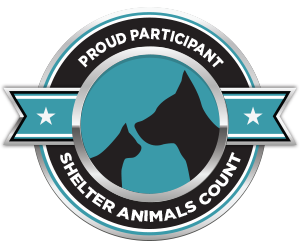Working Cats
The Humane Society of Beatrice occasionally meets cats that do not conform to behaviors of the average indoor companion cat. When we get in unsocialized or feral cats from the shelter, sometimes we have to consider non-traditional adoption placement.
Most shelters do not adopt out cats like these. However, BHS believes these kitties don’t deserve to be euthanized simply because they can’t go into a typical home environment. We recognize that they deserve shelter, access to food and water, and the stimulation of “critter hunting” that a working placement provides. These cats have demonstrated higher independence needs and less tolerance for human contact than most pet cats and often thrive in non-traditional settings such as barnyards, vineyards, or garden centers. Working cats are valued for their alert personalities and prey drive- or as we like to think of it- work ethic!
These cats are healthy, sterilized, vaccinated, microchipped, and in need of a new rural outdoor home, such as a barn, stable, garage, or warehouse. Working Cats are not suited to be indoor pets and, as unsocialized animals, they have no desire to be lap cats. These are working cats, former street cats who are used to outdoor life, prefer minimal to no human contact, and who will happily tend to any mouse, mole, chipmunk, or vermin problems for the small cost of a bowl of cat food and water set out daily, as needed veterinary care and shelter in a garage or barn. And because we spay/neuter these cats before they leave BHS, adopters never need to worry about endless litters of kittens!
To “hire” a working cat, the new guardian must be able to provide the following:
*An accessible indoor area that provides protection from the elements.
*Access to fresh water and kibble at all times.
*Veterinary care as needed.
How much does it cost to adopt a barn cat?
The adoption fee is waived. However, like any adoption you will be responsible for ongoing veterinary care (as necessary), food, water and shelter. Donations are always welcome to help us keep this program running.
What do I do when I bring the cats home?
When you bring the new cats home, they will need to be confined to an escape-proof room or enclosure like a tack room, garage, coop, or XXL dog crate for 2-4 weeks while they acclimate to their new surroundings. You will feed/water and clean the litter pan daily during the confinement period. After this period of confinement, the cats will usually accept their new home and may be released. You will continue to provide daily food and water and allow them access to shelter such as your barn or garage.
Are they spayed or neutered?
Yes. All barn cats come spayed or neutered, current on vaccinations, microchipped, ear tipped and treated for worms and fleas.
Will I be responsible for future vaccinations?
Any cat you adopt from BHS will be current on vaccinations. Following adoption, you will be responsible for keeping the animals’ vaccinations up to date. The best way to have feral cats vaccinated is with the use of a live humane trap.
Do you have any friendly barn cats?
No; the cats in the barn cat program are not social, friendly cats or suited to be pets. They have no desire to be “lap cats” and cannot be touched, or may take a very long time to trust enough to pet. We strongly encourage adopters to offer cats in this program an independent outdoor life complemented by appropriate care and shelter like a barn or garage.
Do you have any barn kittens?
The youngest cats in the Barn Cat Program are approximately six months old. BHS will not adopt younger kittens as barn cats, as they don’t yet have the knowledge, size, or skills to remain safe outdoors. Most cats in the barn program are young adults between one and five years of age, though we do have younger and older cats available occasionally. If you have an age preference, just let us know and we will do our best to accommodate you!
What do the barn cats require?
The cats require shelter in a permanent building or structure like a barn, shed, stable, or garage in a suitable rural area where they will be safe. The property should be at least .5 miles away from busy roads. Daily food and water must be provided, as well as any future medical care needed. The cats must also be kept confined for the initial 2-4 week relocation period to ensure a successful transition to their new home.
Can I come look at, or select, my barn cats?
The BHS barn cats are housed with "hide boxes" that make handling the cats as safe and stress-free as possible. They are kept in our holding rooms, which are not accessible to visitors, for safety reasons. When you are approved to adopt BHS will select barn cats for you based on which cats are available at that time. If you have a color, age, or gender preference, we will do our best to accommodate you, though! Just fill out the adoption application!
Working cats will be spayed or neutered, dewormed, checked for ear mites, given flea/rick prevention, vaccinated for rabies and FVRCP and micro-chipped prior to leaving. WE DO NOT TEST WORKING CATS FOR FIV/FELUK (UNLESS SYMPTOMATIC) to find out more on why visit: https://www.alleycat.org/resources/protocols-testing-feline-immunodeficiency-virus-fiv-and-feline-leukemia-virus-felv/
BHS does not support testing community cats for FIV and FeLV for multiple reasons:
The percentage of community cats infected with either FeLV or FIV is low. Studies detected FeLV in 4.3% of cats; FIV in 3.5%. This is similar to the rate in owned cats. Several large-scale spay and neuter clinics in the U.S. report only a 1-2% incidence of FeLV in the early years when every cat is tested. Test results can be unreliable and can result in false positives. Cats testing positive should be re-tested at least 28 days after the cat’s last possible exposure to the virus. Spaying or neutering cats inhibits the spread of the viruses. Since spaying and neutering reduces or eliminates the primary modes of transmission, such as fighting and breeding, infected cats pose less risk to other cats. Infected cats are often asymptomatic and can remain healthy with no sign of illness for many years or for their entire life; considering all factors, more cats likely die from having positive test results than die from FIV-related disease. Testing can be prohibitively expensive. The cost of testing (and often re-testing because of false positive test results) hinders the success of a spay and neuter program. Resources are best applied to spaying and neutering more cats. Increasing the number of cats who are spayed or neutered decreases the incidence of virus transmission. FIV tests do not differentiate between FIV infection and FIV vaccination. A positive test is likely to result in euthanizing vaccinated cats who are not infected. FIV and FeLV are incurable viruses that only affect cats. Humans cannot catch or transmit these viruses. Not all cats that become infected will develop the disease. Cats who test positive for FIV often live long, healthy lives. Many veterinary spay and neuter clinics do not test for FeLV or FIV, because most community cats enjoy excellent health and are no more likely to be infected with disease than owned cats. In fact, owned cats and community cats contract FeLV and FIV at an equally low rate (about 4%).*





